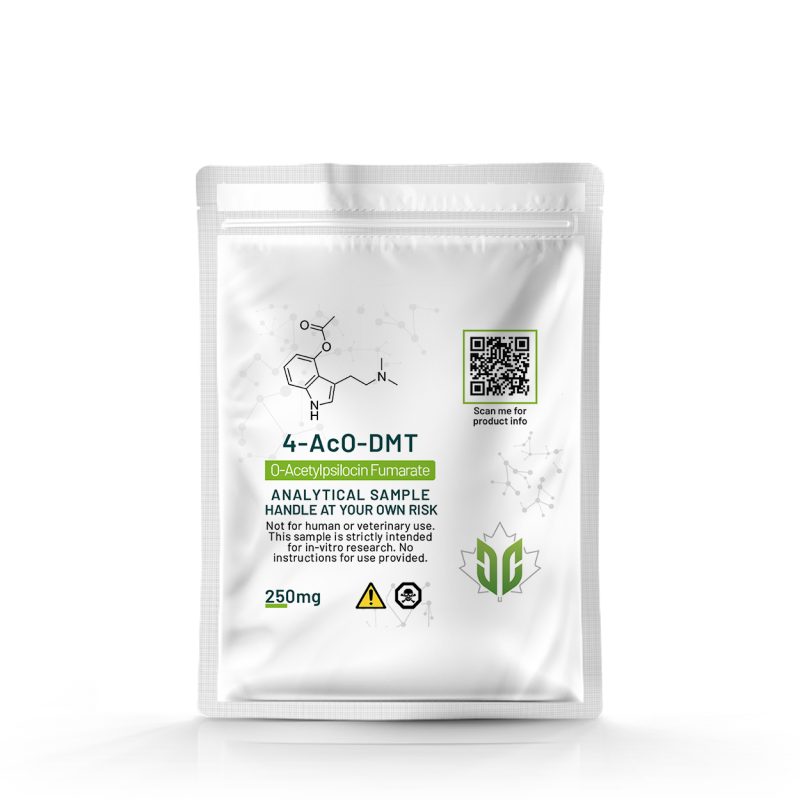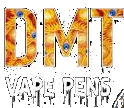Uncategorized
What is 4-AcO-DMT?
4-AcO-DMT stands for 4-Acetoxy-DMT. It was invented by Albert Hofmann — the same person who invented LSD (lysergic acid diethylamide) — and his colleague Franz Troxler. It was invented in the early 60s as part of the duo’s exploration of the active ingredients in psychedelic mushrooms.
4-AcO-DMT is a derivative of psilocin — which is the main pharmacological component of magic mushrooms. Both psilocybin and 4-AcO-DMT are converted to psilocin by the liver, which then provides the psychoactive effects.
As such, the effects of 4-AcO-DMT are virtually identical to that of psilocybin or psilocin.
The company the team was working for — Sandoz — filed for a patent in January of 1963 but never got a chance to exploit it for any profit. They simply didn’t know what to do with this or any of Hofmann’s psychoactive substances (including LSD and psilocybin).
This all took place just shortly after the Harvard Psilocybin project — which was run by Timothy Leary and Richard Alpert. Sandoz was giving Leary large quantities of LSD for the sake of studying it in search of potential lucrative applications in the field of psychotherapy.
4-AcO-DMT was shelved for several decades until the late 90s when a man by the name of David E. Nichols began campaigning for the use of the substance in psychedelic-assisted psychotherapy. He aimed to motivate researchers to take a closer look at this compound so it could eventually make its way into the medical system. Nichols favored it for its reliability of effects, cost-effectiveness, and sheer potency.
Unfortunately, there has yet to be a single clinical study on the effects of 4-AcO-DMT. Most of the information currently available comes to us from animal studies and anecdotal reports.
Despite how poorly this drug has been studied, 4-AcO-DMT is one of the most popular synthetic psychedelics, falling behind LSD and ketamine but higher than 2C-B, Dipt, or other drugs in the 2C-X family.
4-AcO-DMT is a whitish brown powder in its raw form, most often sold in capsules or tablets.
4-AcO-DMT: Specs & Technical Details
| Chemical Name | 4-Acetoxy-DMT |
| Level of Risk | Low |
| Other Names | Synthetic Shrooms, Psilacetin, 4-acetoxy-DMT, or 4-AcO-DMT |
| Most Common Side-Effects | Anxiety & Paranoia |
| Duration of Effects | 2–6 hours |
| Legality | Illegal in most countries, legal in Canada |

What Does 4-AcO-DMT Feel Like?
In general, 4-AcO-DMT mimics the effects of psilocybin mushrooms. The active ingredient isn’t the 4-AcO-DMT itself — but its primary metabolite, psilocin. This makes 4-AcO-DMT a prodrug of the naturally occurring psychedelic, psilocin.
In lower doses (up to 30 mg), 4-AcO-DMT and magic mushrooms are virtually indistinguishable. It produces auditory and visual hallucinations, enhances introspection and existential thought processes, suppresses the default mode network (DMN), and alters the perception of time and sensory information.
In higher doses (over 30 mg), the effects of 4-AcO-DMT begin to change. This dose is very powerful and is much more similar to DMT. The visuals become much more fractal and geometric, and the hallucinations and sense of empathy and introspection become very intense.
The existential weight of this substance, especially in higher doses, is one of the main reasons why so many people only use this drug once. High doses of 4-AcO-DMT are much more likely to cause terrifying or uncomfortable trips than high doses of magic mushrooms, but it isn’t clear why this is the case.
Through our trip surveys, we’ve received 11 reports of people using 4-AcO-DMT. Most people took between 20 and 30 mg and reported the effects to be very similar to magic mushrooms but a bit mellower.
Common Reported Effects from 4-AcO-DMT:
- Introspection
- Altered perception of time
- Fractal geometric patterns
- The perception of music changes, sometimes for worse, sometimes better
- Full-body floating sensation
- Euphoria
- Ego-dissociation
How Long Does 4-AcO-DMT Last?
One of the main differences between 4-AcO-DMT and shrooms is the duration of effects. This substance can last anywhere from 2 to 6 hours. Only in very rare cases does it last a full 8 hours like magic mushrooms.
If you take 4-AcO-DMT on an empty stomach or snort the powder rather than consume it as a capsule, the effects are going to begin and end sooner.
For example, if you take 4-AcO-DMT in capsule form, expect it to take up to 45 minutes to start taking effect. Peak experience begins around the 2-hour mark, which gradually tapers off over the next 2–4 hours.
If you insufflate (snort) the powder, the effects come on within about 15 minutes, reach peak effect by the 1-hour mark, and taper off over the following 2 or 3 hours.
What’s the Dose of 4-AcO-DMT?
One of the main advantages of 4-AcO-DMT, and the reason why people like David Nicoles are so supportive of this substance is its reliability of effects.
Since this is a pure compound with a fast and predictable metabolism, the potency of effects is much easier to gauge than the more natural psychedelics. Plants and fungi are harder to dose because the concentration of active ingredients can vary widely from one sample to the next.
The general dose of 4-AcO-DMT ranges from 10 to 30 mg. Some people take less (microdose), others take more (heroic dose). A 20 mg dose is roughly equivalent (subjectively) to 3 grams of dried psilocybin mushrooms.
If you’re new to using 4-AcO-DMT, it’s wise to start on the low-end of the spectrum and increase gradually over time.
The type of 4-AcO-DMT has a slight impact on the dose. For example, if using 4-AcO-DMT fumarate salt, you need about 1.24 mg of powder. If using 4-AcO-DMT hydrochloride salt, you need a bit less, at 1.15 mg of powder. The dose is also about 20% lower if insufflating the active ingredients rather than consuming them orally.
Here’s some general dosage information to get you started:
- Microdose — 1–2 mg
- Threshold Dose — 5 mg
- Light Dose — 10 – 20 mg
- Standard Dose — 20–30 mg
- Heroic Dose — 40+ mg
Is 4-AcO-DMT Safe?
4-AcO-DMT has an impressive safety profile. It’s seen a lot of interest over the last decade. Yet, there have never been any major concerns with its use from a safety perspective.
Like most indole alkaloids (psilocybin, psilocin, LSD, DMT, LSA), there are very few negative side effects on the body, even in high doses.
All of these substances have been rigorously tested to explore their safety profiles. There’s never been a reported death to anybody using just 4-AcO-DMT. There have been some deaths associated with other drugs.
As with any psychedelic substance, there’s some risk of psychological harm from using this substance. It’s possible the use of 4-AcO-DMT could worsen or trigger psychotic breaks.
Powerful psychedelic experiences can also lead to ontological shock if the individual wasn’t ready or didn’t have the resources to integrate the experience effectively. This can lead to long-term psychological harm, including post-traumatic stress disorder (PTSD), depression, and anxiety.
The main safety concerns of this substance are the dose (it’s relatively easy to take too much) and adulteration with potentially harmful ingredients like fentanyl, PCP, or NBOMe. Because it’s a chemical powder, it’s much easier to adulterate it with harmful chemicals. You should always test your 4-ACO-DMT before you assume it to be pure.
You should always test your substances with a drug testing kit. I like using the kits from Elevation Chemicals for this.
Side Effects of 4-AcO-DMT
Concentrated 4-AcO is very potent. You only need a few mg of powder to get a hefty dose, unlike mushrooms which involve several grams to hit the ideal dose. If you take a few mg too many magic mushrooms, there isn’t going to be any major shift in the effects. With 4-AcO-DMT, even just a few mg more can result in a big change in the experience.
Large doses of 4-AcO-DMT are more likely to lead to a more challenging trip than lower doses, which tend to be mellow and positive.
With that said, physical side effects are rare with 4-AcO-DMT. Here are some of the side effects that were reported by submissions in our trip surveys for 4-AcO-DMT, along with personal experience.
Potential side effects of 4-AcO-DMT Include:
- Nausea & vomiting
- Dizziness
- Anxiety
- Paranoia
- Heart palpitations
- Headaches
- Flushing in the face and chest
Is 4-AcO-DMT Legal?
4-AcO-DMT is caught in a bit of a legal grey area in most parts of the world. It’s gone relatively unnoticed by regulators and isn’t mentioned by name on any prohibited substances lists in the United States, Canada, or the UN Convention on Psychotropic Substances.
This compound is technically legal in Canada and is widely available from sources online.
In the United States, things are a little bit different. While not specifically named, 4-AcO-DMT is an analog of psilocin, which is illegal. Under the Federal Analogue Act, 4-AcO-DMT is technically considered a Schedule I drug — though it’s unlikely for arrests to be given for possession of this substance — it’s entirely possible.
In the UK, 4-AcO-DMT is listed as a Class A drug under the Misuse of Drugs Act of 1971.
In Australia, 4-AcO-DMT is classified as a Schedule 9 — which means it’s only legal if the seller is granted special access from the government. We have not been able to find any examples of legal sources for 4-AcO-DMT in Australia, and it appears they aren’t giving out licenses for this substance.
Related: List of legal psychoactive substances.
How 4-AcO-DMT Works
Like most indole psychedelic alkaloids, 4-AcO targets the 5-HT2A serotonin receptors. These receptors are thought to work by suppressing the default mode network (DMN) in the brain.
This network is responsible for controlling the communication between other regions of the brain. It acts as a reducing valve, limiting the information that comes into the brain and suppressing certain activities within the brain. The point of this system is to make us more efficient and prevent us from being overwhelmed at trivial events.
When the DMN is suppressed through the use of psychedelics like 4-AcO-DMT, this reducing valve is left wide-open. This allows a much higher level of activity in the brain in response to introspective thoughts and sensory perception.
This state enhances our out-of-the-box thinking and creativity, alters the way we perceive time and sensory information, and brings up memories and emotions that are otherwise suppressed within the brain. This leads to visual and auditory hallucinations, a deep state of introspection, ego-death and dissolution, and a strong feeling of connectedness with the world around us.
This experience is shared by most of the indole and phenethylamine psychedelics. All of these compounds target the same receptors to exert their effects but have different affinities for other serotonin receptors, as well as NMDA receptors, GABA, and much more. This is what makes the effects of psychedelics so unique despite all doing essentially the same thing.
